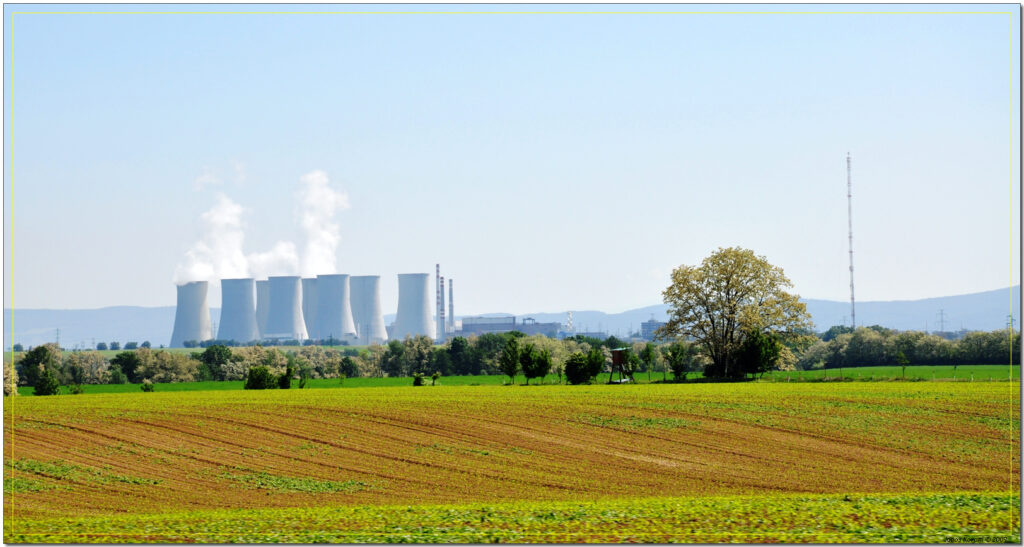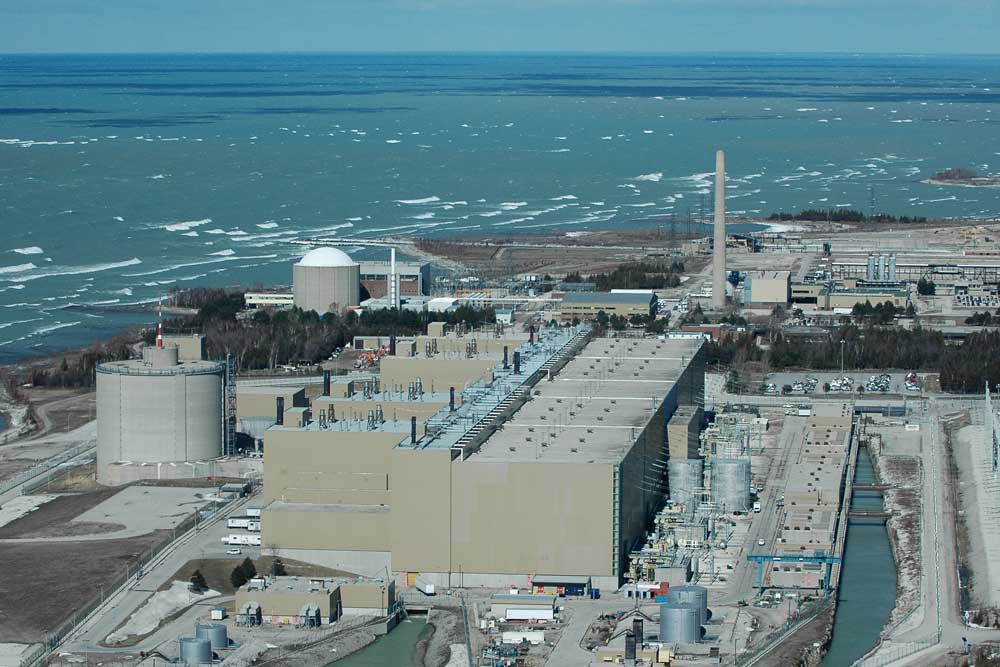SHOULD NUCLEAR POWER BE PART OF COUNTRY’S ENERGY MIX?
By Henrylito D. Tacio
Photos sourced from Wikipedia
“Our shortage of electricity is a real, serious problem that we cannot downplay. But if we focus exclusively on it, we run the risk of seeing just the trees and not the forest.” That was what Rufino Bomasang, then energy undersecretary, told community journalists who attended a media briefing on business and economics reporting at Los Baños, Laguna.
More than three decades later, the same scenario is happening. As the country continues to pursue a path of global competitiveness, it is becoming evident that securing an adequate energy supply will be ever more critical to its growing industries.
The Department of Energy (DOE) is thinking of nuclear energy as one possible option. In fact, Energy Secretary Alfonso Cusi has included nuclear power to be part of the country’s energy mix in a proposed executive order (EO).

The proposed EO “is among the short-term and long-term outlooks for the power sector and the corrective policy issuances being undertaking” by the energy department, according to the state-owned Philippine News Agency (PNA).
Cusi is seeking approval of the proposed EO as the country is expected to have “a rapid growth in electricity demand, which a 24/7 power is essential and necessary.” The proposal is now in the hands of President Rodrigo R. Duterte and has not been approved yet.
It must be recalled that the country entered into a nuclear energy agreement with a Russian company when the president visited Moscow some years back. “The president wanted to study first the proposal,” Presidential Spokesperson Salvador Panelo was quoted as saying.
At the time when Jericho L. Petilla was energy secretary, the country was also looking at nuclear power as possible source of energy for the country. “We’re looking at it on a long-term basis,” he said. “At the same time, we have to look at the technical side, and then recommend later on if studies show that it’s good for the country.”
According to Petilla, social dimension — or the possible non-acceptance of nuclear energy by the public — is the limiting factor why the government is excluding it from its energy mix. In addition, under the Philippine Constitution, nuclear power plants are prohibited.
The Bataan Nuclear Power Plant (BNNP) is the country’s first and only nuclear power. The Westinghouse Electric built it during the presidency of Ferdinand Marcos at a cost of US$2.2 billion. It was mothballed in 1986 due to safety concerns, even before it could begin operations. During the administration of Gloria Macapagal-Arroyo, proponents wanted the BNPP rehabilitated. But it would cost a whooping US$1 billion to rehabilitate.
“We have met the enemy; and he is us,” so goes a popular statement from Walt Kelly. This is particularly true in the case of climate change. There is “95 percent likelihood” that human activity is the cause of climate change, according to the findings of the United Nations’ Intergovernmental Panel on Climate Change (IPCC).
The 5th IPCC Report said that human activity released 545 gigatons of carbon dioxide – the main greenhouse gas – from 1750 to 2011. It is projected that if 1,000 gigatons of carbon dioxide is emitted, which at current rates will likely occur between 2040 and 2050, there is a one-in-three possibility that the 2 degrees Celsius limit above the pre-industrial level will be exceeded.
“We need to take action now because a warmer earth threatens food security and public health. It is projected to bring down gross domestic product by three percent and threatens the survival of communities,” said Loren Legarda, the United Nations Champion for Disaster Risk Reduction and Climate Change Adaptation for Asia-Pacific.
This is the reason why Legarda renewed her call for greater climate change action, particularly through significant reductions in greenhouse gas emissions and promotion of renewable energy development.
Non-renewable energy depends primarily on fossil fuels which include coal, oil, and natural gas. On the other hand, renewable energy source, which are considered to be inexhaustible, includes solar power, hydroelectric, geothermal energy, and biomass energy.
In the July 7-21, 2011 issue of Rolling Stone, former American vice president Al Gore wrote: “Renewable energy sources are coming into their own. Both solar and wind will soon produce power at costs that are competitive with fossil fuels; indications are that twice as many solar installations were erected worldwide last year as compared to 2009.
“The reductions in cost and improvements in efficiency of photovoltaic cells over the past decade appear to be following an exponential curve that resembles a less dramatic but still startling version of what happened with computer chips over the past 50 years,” Gore added.
But some of the world’s top climate scientists say wind and solar energy won’t be enough to head off extreme global warming, and they’re asking environmentalists to support the development of safer nuclear power as one way to cut fossil fuel pollution.
In a letter released to the media, the climate scientists said that “those energy sources cannot scale up fast enough” to deliver the amount of cheap and reliable power the world needs, and “with the planet warming and carbon dioxide emissions rising faster than ever, we cannot afford to turn away from any technology” that has the potential to reduce greenhouse gases.
“The time has come,” the joint letter said, “for those who take the threat of global warming seriously to embrace the development and deployment of safer nuclear power systems” as part of efforts to build a new global energy supply.
Nuclear power is the use of sustained nuclear fission to generate heat and electricity. As of the middle of 2016, 31 countries were operating nuclear reactors for energy purposes. “Nuclear power plants generated 2,444 net terawatt-hours (that’s billion kilowatt-hours) of electricity in 2015, a 1.3% increase, but still less than in 2000 and 8.2% below the historic peak nuclear generation in 2006,” wrote Michael Schneider and Antony Froggatt, authors of The World Nuclear Industry: Status Report 2016.
However, there is an ongoing debate about the use of nuclear energy. Proponents, such as the World Nuclear Association, the International Atomic Energy Agency and Environmentalists for Nuclear Energy contend that nuclear power is a sustainable energy source that reduces carbon emissions.
But opponents think otherwise. The Economist said nuclear power “looks dangerous, unpopular, expensive and risky.” Consider the following: Chernobyl in the former Soviet Union, Three Mile Island in Pennsylvania in the US and the Fukushima nuclear plant in Japan.

The Fukushima nuclear disaster, which happened after an earthquake, prompted a rethink of nuclear energy policy in many countries. Germany decided to close all its reactors by 2022, and Italy has banned nuclear power.
“Nuclear power is beset by problems that go well beyond its propensity for occasional accidents,” noted Christopher Flavin, of the Worldwatch Institute. “Technologically, economically, and politically, nuclear power faces a series of obstacles that will prevent it from coming close to displacing fossil fuels to significantly delay global warming.”
Flavin, who wrote the 1987 Worldwatch paper entitled Reassessing Nuclear Power: The Fallout from Chernobyl, cited an analysis done by the Rocky Mountain Institute in Colorado. It has developed a nuclear scenario that reduces global warming by 20 to 30 percent by the middle of 21st century through the substitution of nuclear plants for all coal-fired plants.
“Analysis at the Rocky Mountain Institute found that this would require the completion of one nuclear power plant every one to three days during the next 40 years,” Flavin wrote. “Many countries would be almost blanketed by nuclear plants, and the cost would run to as much as $9 trillion.”
A nuclear power program of this scale, Flavin said, would require not just a reversal of a worldwide trend, but a program of nuclear construction that is 10 times as large as any the world has seen. “Such an effect is unthinkable, both economically and politically,” he said. “Indeed, a democratic government that tried it would most likely soon be voted out of office.”
On the brighter side, nuclear power has caused far fewer accidental deaths per unit of energy generated than other major forms of power generation. In comparison, energy production from coal, natural gas, and hydropower have caused far more deaths due to accidents.
Nuclear power plant accidents rank first in terms of their economic cost, accounting for 41% of all property damage attributed to energy accidents, according to Benjamin K. Sovacool, author of the study, A preliminary assessment of major energy accidents, 1907–2007.
Meanwhile, the four respected climate scientists acknowledge that there are risks to using nuclear power, but say those are far smaller than the risk posed by extreme climate change. “We understand that today’s nuclear plants are far from perfect,” they wrote.

